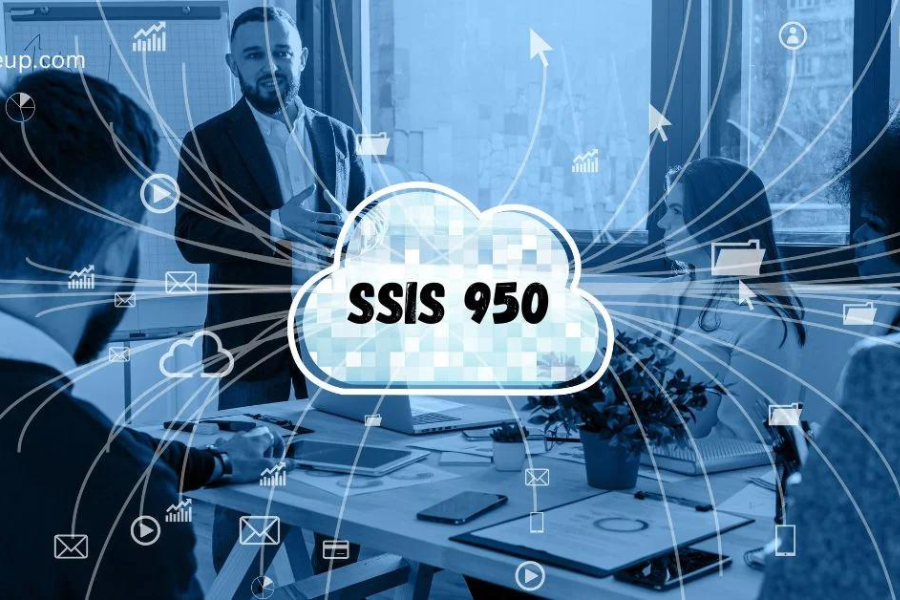Introduction to SSIS-950
Are you feeling the pressure of outdated data integration tools? If so, it might be time to consider a shift to SSIS-950. This powerful tool can streamline your ETL processes and enhance your workflow efficiency like never before. With its advanced features and capabilities, migrating to SSIS-950 can unlock new possibilities for your data management needs.
Imagine having a more intuitive user interface, improved performance metrics, and enhanced connectivity options—all at your fingertips. Whether you’re managing large datasets or automating complex workflows, SSIS-950 is designed to meet the demands of modern businesses.
Ready to dive into the world of seamless data integration? Let’s explore how you can make this migration as easy as possible.
Benefits of Migrating to SSIS-950
Migrating to SSIS-950 offers enhanced performance that can significantly improve data processing speeds. This efficiency allows businesses to handle larger datasets with ease, leading to quicker insights.
Security is another crucial benefit. SSIS-950 comes equipped with advanced security features that protect sensitive data during the ETL process. Enhanced encryption methods and secure connections help safeguard your information from potential threats.
User experience also sees a boost. The updated interface in SSIS-950 is more intuitive, making it easier for users of all skill levels to navigate and utilize its features effectively.
Additionally, integration capabilities are greatly expanded. SSIS-950 supports seamless connectivity with various sources and destinations, facilitating smoother data flows across platforms.
The support for new technologies ensures your organization stays competitive. As industries evolve, having a robust tool like SSIS-950 keeps you aligned with current trends and demands in data management practices.
Preparing for the Migration Process
Before diving into the migration process, a solid plan is crucial. Start by assessing your current environment. Understand what data and processes you need to migrate.
Next, gather all necessary documentation. This includes data flow diagrams, existing SSIS packages, and any relevant scripts. Having this information at hand will streamline the transition.
Engage your team early in the preparation phase. Encourage open discussions about potential challenges they foresee during migration. Their insights can help identify areas that require extra attention.
Backup everything before beginning the actual migration. Secure copies of databases, files, and configurations to ensure nothing is lost if issues arise later on.
Set clear goals for what you want to achieve with SSIS-950. Whether it’s improved performance or enhanced features, having specific objectives can guide your approach throughout the process effectively.
Step-by-Step Guide to Migrating to SSIS-950
Begin by assessing your current SSIS environment. Document all existing packages, configurations, and dependencies. This will provide a clear baseline for your migration.
Next, back up your data and components. Always have a recovery plan in case something goes wrong during the transition.
Install SSIS-950 on your system as per the provided guidelines. Ensure that all prerequisites are met to avoid complications later.
Import your documented packages into SSIS-950 using the built-in import wizard. Pay attention to any compatibility issues that arise during this process.
After importing, review each package carefully for errors or warnings. Testing should be thorough; validate functionality against expected outcomes to ensure everything works seamlessly.
Set up scheduled tasks and monitor performance closely post-migration to catch early signs of trouble before they escalate.
Troubleshooting Common Issues during Migration
Migrating to SSIS-950 can present challenges. Knowing how to tackle these issues is crucial for a smooth transition.
One common problem arises from incompatible data sources. Before migration, ensure all your connections and data formats align with the requirements of SSIS-950.
Another frequent issue involves package execution errors. Review log files meticulously. They often contain clues that point directly to the root cause of the failure.
Performance might also dip post-migration due to outdated configurations or inefficient queries. Optimize your packages by testing them in a controlled environment first.
Don’t overlook version conflicts between components either; always check compatibility when updating any related software or tools connected with SSIS-950.
Engage your team throughout this process. Collaboration fosters knowledge sharing and helps identify potential pitfalls early on, making it easier to resolve issues swiftly as they arise.
Tips for a Smooth Transition
Clear communication is vital during your migration to SSIS-950. Keep all stakeholders informed about the changes and expectations.
Establish a timeline with realistic deadlines. This will help everyone stay on track without unnecessary stress.
Utilize training resources available for SSIS-950. Familiarizing your team with new features can enhance productivity early in the transition.
Implement a phased approach if possible. Migrating sections of your system one at a time allows you to identify potential issues without overwhelming the entire infrastructure.
Regularly back up data before making significant changes. This ensures that you have recovery options should anything go wrong during the process.
Seek support from online communities or forums focused on SSIS-950. Engaging with others who have faced similar challenges can provide valuable insights and solutions.
Conclusion
Migrating to SSIS-950 can significantly enhance your data integration processes. The transition may seem daunting at first, but with the right preparation and guidance, it can be smooth and efficient. Embrace the benefits of improved performance, better error handling, and more robust functionalities that SSIS-950 offers.
By following a clear step-by-step migration guide and being aware of potential challenges along the way, you’re setting yourself up for success. Remember to take advantage of troubleshooting techniques if issues arise during migration. With thoughtful planning and execution, this upgrade will empower your organization’s data management capabilities.
Don’t hesitate to explore additional resources or reach out for support throughout your journey. Your path to optimizing data workflows starts now with SSIS-950!

